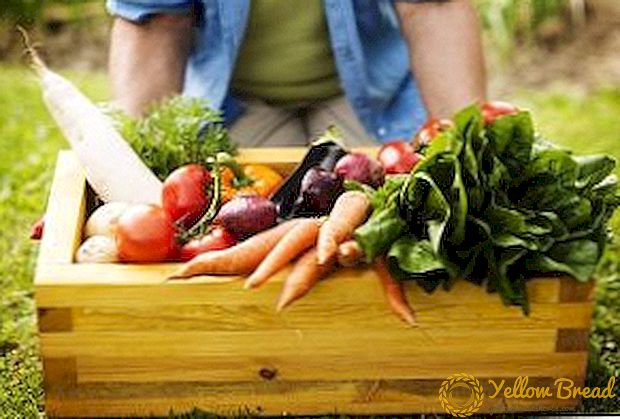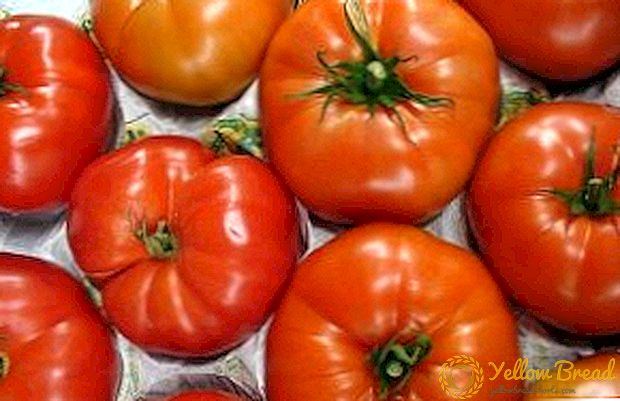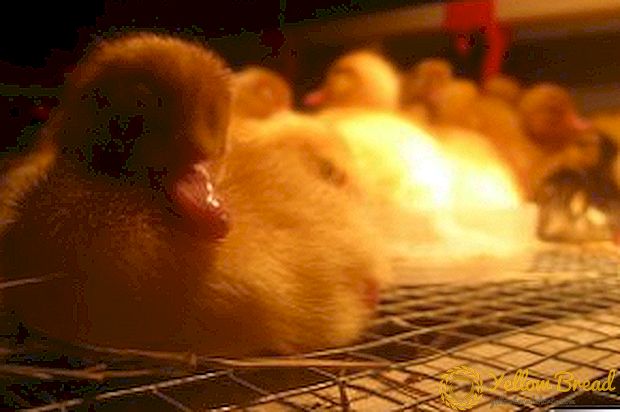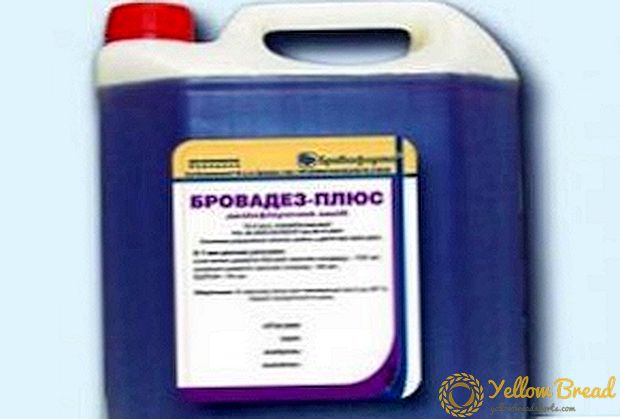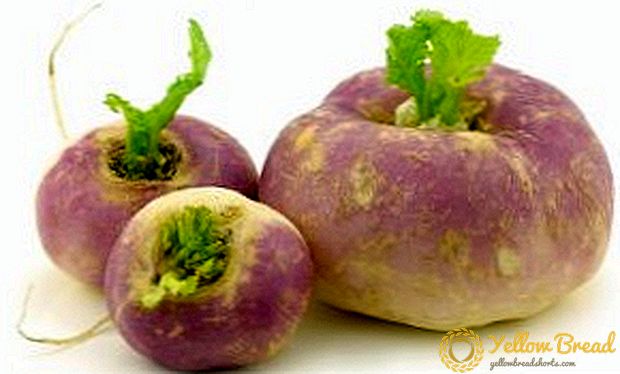 Compared with its close relative cabbage, rutabaga is not so popular vegetable. When asked what rutabaga is and how it looks, many will at best remember that it is a garden plant that looks like a turnip or beet. However, you should take a closer look at this root - it has high taste and a set of useful properties.
Compared with its close relative cabbage, rutabaga is not so popular vegetable. When asked what rutabaga is and how it looks, many will at best remember that it is a garden plant that looks like a turnip or beet. However, you should take a closer look at this root - it has high taste and a set of useful properties.
- What is it?
- Calorie and nutritional value
- Swede composition
- What is the use?
- How to choose a product
- Application
- For treatment
- Slimming
- For skin and hair
- In cooking
- Harvesting and storage of root crops
What is it?
The vegetable itself belongs to the cabbage family of the cabbage family. There is a hypothesis that rutabagas appeared as a result of cabbage and turnip crossing. This is a biennial plant. After it is planted in the first year, a root crop and leaves are formed, in the second year - shoots with yellow flowers, and then seeds. Resistant to frost. It feels great on sandy and loamy soils. 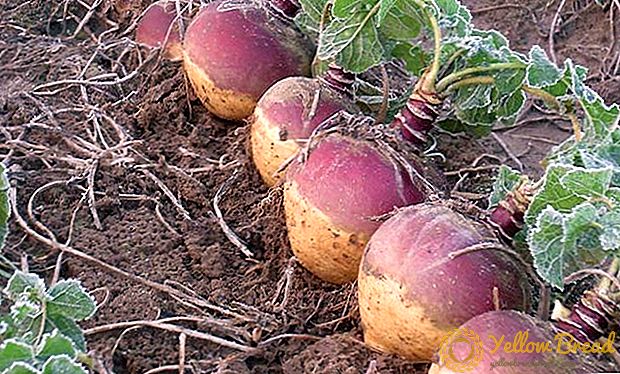 Swede root can have a different shape depending on the variety - cylindrical, round, oval. Its flesh is hard, white or yellow. Peel, again, depending on the variety can be greenish, violet, yellow, etc.D. Leaves fleshy.
Swede root can have a different shape depending on the variety - cylindrical, round, oval. Its flesh is hard, white or yellow. Peel, again, depending on the variety can be greenish, violet, yellow, etc.D. Leaves fleshy.
Calorie and nutritional value
Rutabaga is a low-calorie vegetable (only 35-37 Kcal per 100 g of the product), which is attractive for people who take care of their figure. It can be eaten raw, fried, baked, boiled. The raw vegetable tastes somewhat like a turnip, and partly with cabbage.
As for the nutritional value of the product, the nutrients contained in it are clearly not enough for the full nutrition of the person. For comparison, the same wheat bread contains about 9 times more protein, 32 times more fat, 6 times more carbohydrates. 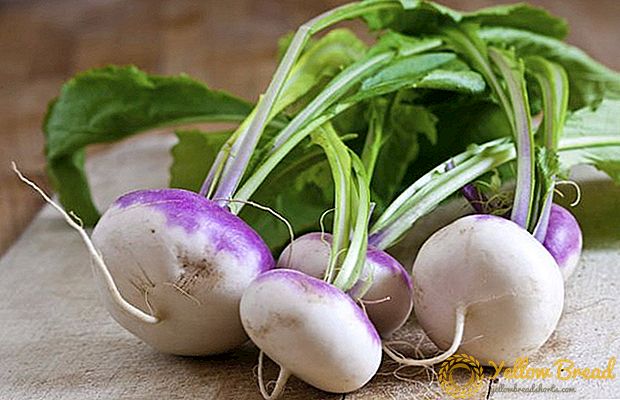 100 g of raw root vegetables contain:
100 g of raw root vegetables contain:
- 0.1 g of fat (mustard oil);
- 1.2 g of proteins;
- 7.7 g of carbohydrates;
- 2.2 g of dietary fiber (fiber);
- 0.2 g of organic acids;
- 7.0 g of mono- and disaccharides;
- 87.7 g of water.
Swede composition
This vegetable contains vitamins A, B1, B2, B5, B6, B9, C, E, H, PP. Rich in vegetables and minerals.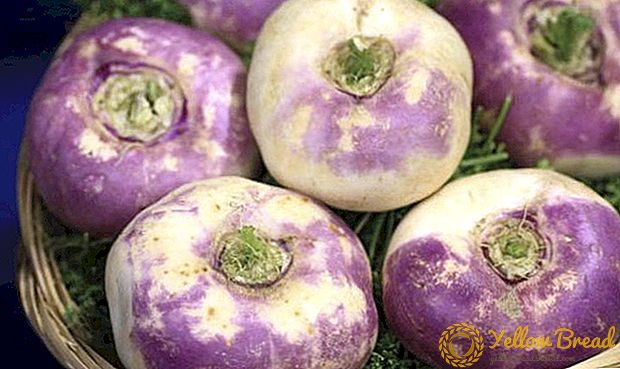 So, in the root of 100 g of raw pulp contains:
So, in the root of 100 g of raw pulp contains:
- 238 mg of potassium;
- 41 mg of phosphorus;
- 40 mg of calcium;
- 14 mg of magnesium;
- 10 mg of sodium;
- 1.5 mg of iron.
What is the use?
A large amount of potassium in this root helps to overcome chronic fatigue. Calcium strengthens bones. The presence of vitamins B, as well as A, PP, E, H makes it a powerful means of combating vitamin deficiency. Vitamin C contributes to the synthesis of hemoglobin and the general strengthening of the body. In addition, because of the mustard oil contained, swede is a good diuretic, wound healing and anti-inflammatory agent. 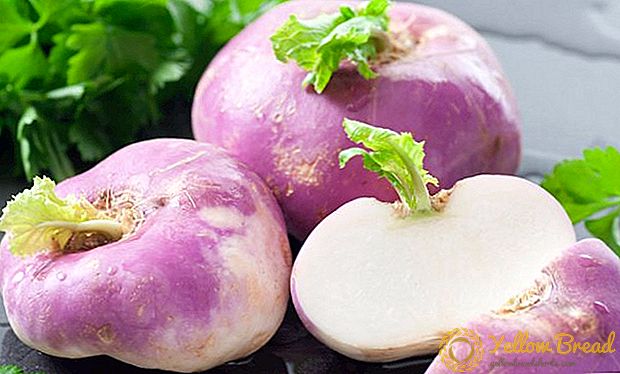 It helps well with dry coughing, translating it into a wet cough, which helps the patient recover. Do not forget about the fiber, which is an excellent intestinal cleaner. The beneficial properties of swede allow doctors to recommend it for constipation and atherosclerosis.
It helps well with dry coughing, translating it into a wet cough, which helps the patient recover. Do not forget about the fiber, which is an excellent intestinal cleaner. The beneficial properties of swede allow doctors to recommend it for constipation and atherosclerosis.
How to choose a product
Swede varieties are canteens and fodder. The latter are distinguished by the white flesh of the root, while the table varieties have yellow flesh.The most popular table varieties are "Krasnoselskaya", "Swedish yellow", "Vilma". Very juicy and sweet root crop gives a grade of "Lizi" and a grade of Ruby similar to it in taste.
Application
Rutabagum is widely used both for medicinal purposes, and nutritionists, as well as cosmetologists.
For treatment
As mentioned above, this vegetable helps a lot when coughing. Root should grate, add a spoonful of honey and leave this gruel to infuse. When juice appears, you must squeeze it through gauze. The resulting medicine is recommended to use three times a day, one tablespoon. 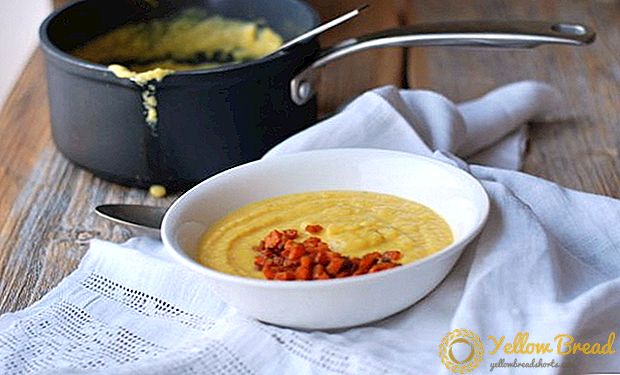 For constipation, the plant is used in the form of puree. To do this, the roots are cut into plates and boiled in water. When the vegetable is softened, add a tablespoon of vegetable oil and lemon juice to the pan and boil the product for another 10 minutes. Next, the finished root crop is mashed in a puree, which is used for the night, about 100 g.
For constipation, the plant is used in the form of puree. To do this, the roots are cut into plates and boiled in water. When the vegetable is softened, add a tablespoon of vegetable oil and lemon juice to the pan and boil the product for another 10 minutes. Next, the finished root crop is mashed in a puree, which is used for the night, about 100 g.
Slimming
Due to its low calorie content, an impressive set of vitamins and minerals, rutabaga is widely used in various diets for weight loss.  In addition, the fiber contained in the vegetable removes slags and toxins from the body quite well, and also improves digestion and metabolism.
In addition, the fiber contained in the vegetable removes slags and toxins from the body quite well, and also improves digestion and metabolism.
For skin and hair
Juice turnips wipe the face to get rid of acne and rashes. This procedure is carried out daily. In addition, it is believed that the juice of the plant with regular rubbing into the scalp promotes hair growth. Cosmetic vitamin masks are made on the basis of mashed root vegetables. For example, rubbed rutabaga is mixed with sour cream to a slurry state. In the mixture added one teaspoon of honey and brine. The mask is applied for 10-15 minutes.
In cooking
This vegetable is very loved in Germany, Finland, Sweden and many other countries. In its raw form, it is usually used in salads. But this useful root vegetable is quite suitable for more complex cooking. Boiled rutabaga to taste somewhat resembles potatoes and is used as a side dish for meat or fish.Used vegetable and in soups. Baked with nuts and honey, it is an excellent dessert. 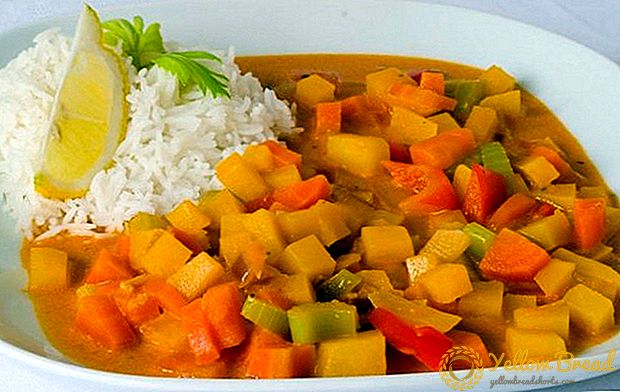 The root crop harmoniously fits into almost any vegetable stew. So, if 350 g of roast fry, put into roaster, add 100 grams of turnips and potatoes, and also about 50 grams of carrots and onions, pour all 0.5 liters of broth from the bones of the bird, then after a couple of hours of extinguishing at the minimum fire will make a wonderful meal.
The root crop harmoniously fits into almost any vegetable stew. So, if 350 g of roast fry, put into roaster, add 100 grams of turnips and potatoes, and also about 50 grams of carrots and onions, pour all 0.5 liters of broth from the bones of the bird, then after a couple of hours of extinguishing at the minimum fire will make a wonderful meal.
Harvesting and storage of root crops
Swede harvest is collected in August-September, depending on the variety and region. The harvested roots are cut tops under the base, cleaned from the ground, dried in the fresh air under a shed and transferred to the cellar, where they are stored for about a year in bulk.
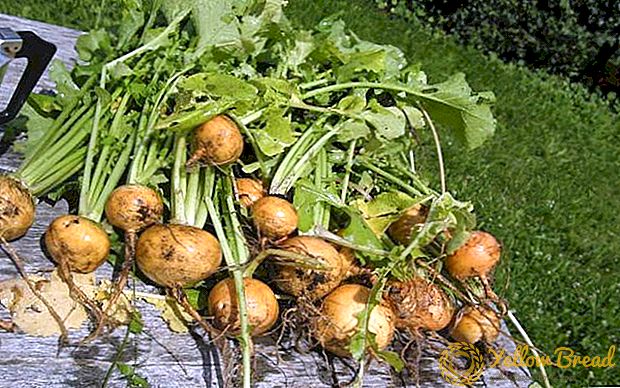 This vegetable can be stored and dried. In this case, the roots are cleaned from the skin, cut into slices, dried in the open air, in the sun. The slices prepared in this way are laid out on a baking sheet and dried in an oven at a temperature of 50-60 ° C.The process continues for hours 5-6, while the oven door must remain open and the slices are periodically mixed.
This vegetable can be stored and dried. In this case, the roots are cleaned from the skin, cut into slices, dried in the open air, in the sun. The slices prepared in this way are laid out on a baking sheet and dried in an oven at a temperature of 50-60 ° C.The process continues for hours 5-6, while the oven door must remain open and the slices are periodically mixed.Swede - a vegetable, in general, we have almost forgotten, and unfairly. This plant can be widely used for medicinal purposes, for diet, in cosmetology and in traditional cooking. For amateur gardeners, its cultivation is not difficult. So you should pay attention to this useful root vegetable.

